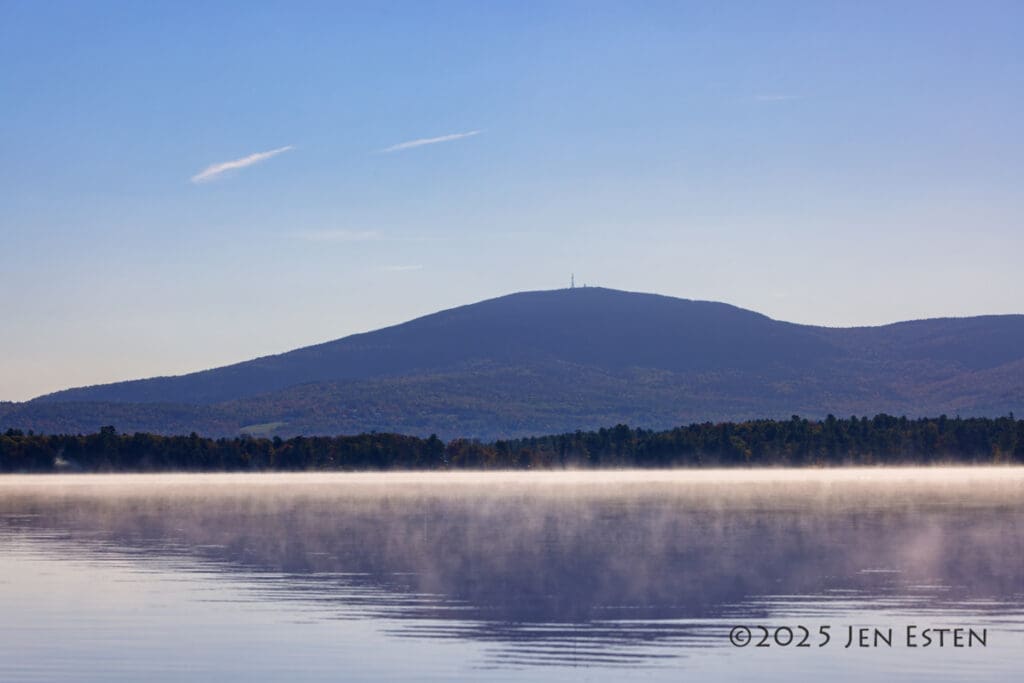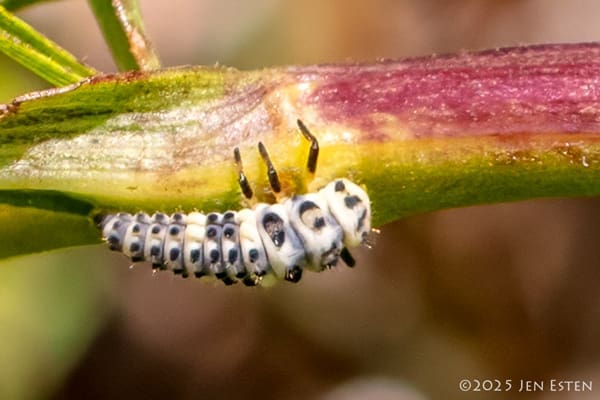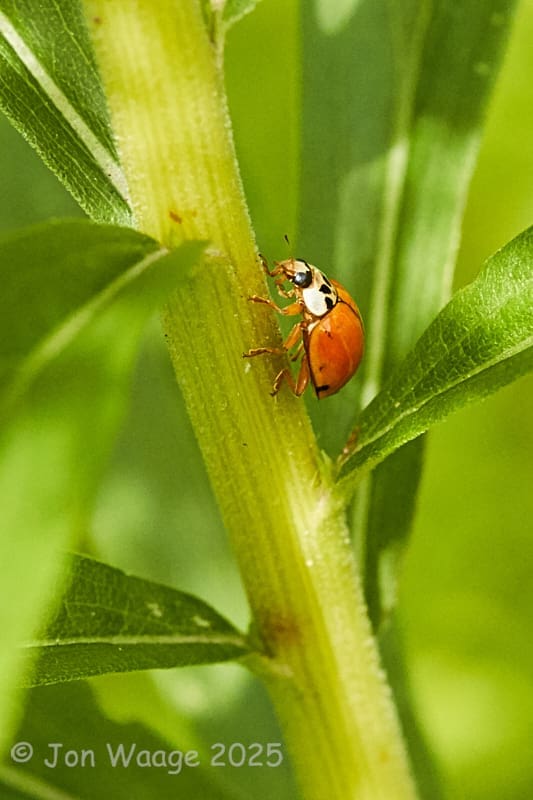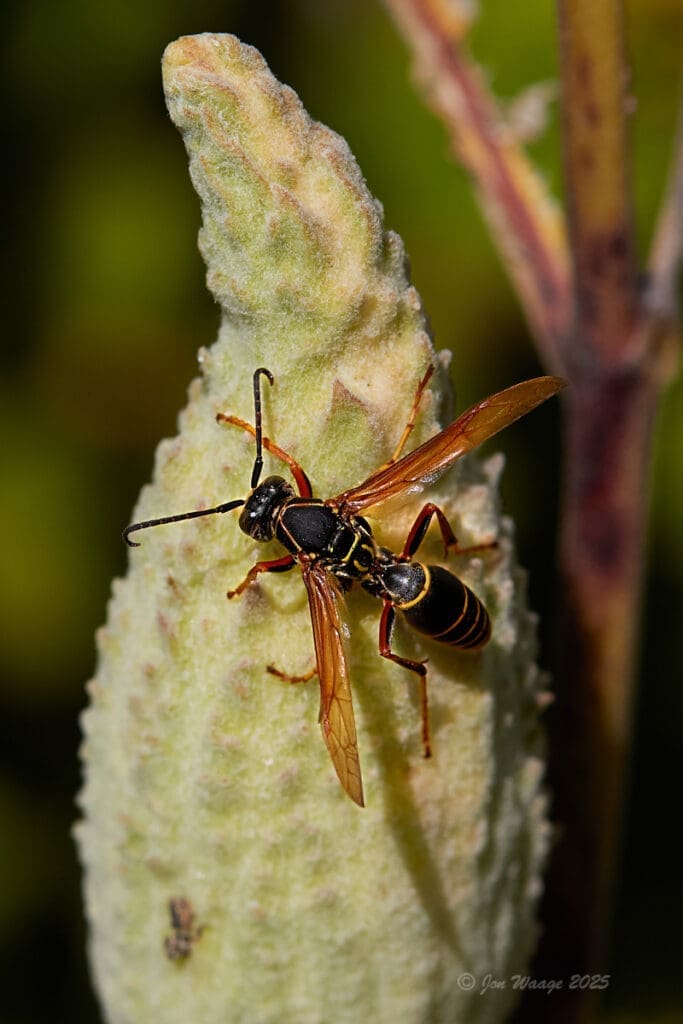Loon Update
2025, No. 13 — October 25th

|
Loon Update
|
Piper continues to thrive and practice her fishing and flying skills. As usual, the male has left for the ocean. He has been a great dad, and we hope to see him next summer.

Now that they seem to be the only loons on the lake, Mom is spending more time with Piper. They are exploring the entire lake looking for food.

She continues to pester her mom for more fish even though she can catch them on her own.

We will be back in November with a review of this summer’s loon story. A key figure in that is our female, who is just finishing her 19th season on the lake. She has hatched 31 chicks, and piper will be the 23rd to have fledged. Take a bow, grand lady of the lake!

|
Eagle Action on the Lake
|
Conservation efforts since the 1980’s have brought both loons and eagles back from record lows. We are accustomed to seeing an eagle perched on Blueberry Island or in the cove. We are also alerted to their presence when the loons give warning calls.

This summer we have often seen more than one eagle on the lake at the same time, and some residents have witnessed them fighting with a third. It is possible that these fights are territorial disputes similar to those our loons are involved in.

Like loons, as populations of bald eagles continue to increase, defending territories is an increasing challenge.
|
Winter House Guests
|
This is the time of year when many of us see wasps and beetles swarming around the windows and eaves of our houses. They are looking for a place to overwinter that is protected and a bit warmer. Before humans, they would find enough places under tree bark, rotting logs, and fallen leaves. With increasing habitat loss, our houses now serve as an additional place for some to shelter.
Below, a small group of lady beetles has found a refuge in a space under one of our window frames. We welcome them there but not in the house. Their abundance tells us that our wild yard has produced a bumper crop of these helpful insects.

The three lady beetles above belong to a species that was imported from Asia to help in controlling aphids and scale insects in agricultural areas. They tend to gather in large groups to overwinter and are the main ones seeking refuge in buildings.
Since we do not use any pesticides, we also depend on biological control by native helpers like these voracious aphid-eating beetles.

Be sure not to be fooled by what lady beetle larvae look like! Below is a Lady Beetle grub. Most species are black and orange, but this is one whose grubs are white. They are also voracious aphid consumers. Sadly, some people see them, think they are being invaded by a new pest, and spray them!

Ecologists worldwide are extremely concerned by a decrease in insect abundance. We understand a basic principle of ecology: Insects are an essential part of the food chain for many animals. Quite a few are also essential pollinators, and others are essential predators and parasites of pest insects. Loss of insect numbers and diversity will have major impacts on the species that depend on them. Maybe tolerating winter house guests isn’t such a bad thing.

Other, but more controversial, winter house guests are wasps. They are fertilized females who need to survive the winter in order to lay eggs next spring. They too are not that welcome if they get inside. However, one group, the paper wasps, are welcome to join the lady beetles in spaces under our windows.

Paper wasps are usually brown with subtle markings. Many around here belong to the genus Polistes, and they gather as groups of sisters to build open-faced nests like the one over our doorway (below). Unlike yellow jackets and hornets, paper wasps are quite tame, and we tolerate their nests around the house since no one is likely to be stung. Plus, they have a job to do in the summer.

The adults of all wasps feed on nectar and are helpful pollinators, but they all feed their young regurgitated insects. Wasps in general are the world’s most important pest insect control agents!
|
Fall Color from the Water
|
A cool, foggy morning this time of year is a special treat. With few boats on the lake and the promise of sun later, we love to venture out to visit the loons and enjoy the colors of fall. Here is a morning from last week.






The drought has affected much of the fall color this year, but closer to the water it is still a treat!
Bye for now … Jen and Jon

Text and Photographs by Jen Esten and Jon Waage
